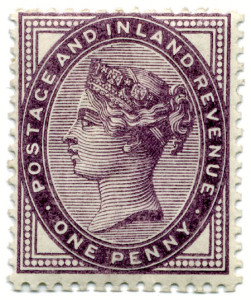Today we take a look at how parcel delivery might develop to avoid one of the more frustrating aspects of receiving a parcel in the post. It can be incredibly annoying to come home and be welcomed with a message from the driver saying that you weren’t in to receive your parcel.
So how could parcel delivery change in the future to compensate for us not always being at home? Here are some of the possible solutions that the Royal Mail came up with last year that could make international parcel delivery a whole lot more efficient:
Many of us use smart phone applications as part of our everyday lives and we could now introduce tracking applications to give us a better idea of exactly how long our parcels are going to take to arrive on our doorstep.
In order to make sure your letters and parcels cannot be accessed when you aren’t in to receive them, lock boxes were also suggested so that drivers could deliver parcels in PIN-protected storage compartments rather than delivering to your neighbours.
E-mail is a form of contact regularly used in other forms of delivery service and it could prove to be extremely beneficial should someone need to know exactly when they have to be home to receive their parcel.
Visit our Help and FAQ’s page at RAND Logistics if you need to learn more about our current collection and delivery service.


 Embossed postage stamps were also used, in a variety of octagonal designs. The age of the Penny Red came to an end in 1880 along with the start of the new surface printed stamps. The Penny Lilac was issued subsequently in 1881 and lasted until the end of Victoria’s reign in 1901. The Penny Lilac was also the first stamp issued that was valid as both a postal stamp and a revenue stamp; used to collect taxes or fees on documents.
Embossed postage stamps were also used, in a variety of octagonal designs. The age of the Penny Red came to an end in 1880 along with the start of the new surface printed stamps. The Penny Lilac was issued subsequently in 1881 and lasted until the end of Victoria’s reign in 1901. The Penny Lilac was also the first stamp issued that was valid as both a postal stamp and a revenue stamp; used to collect taxes or fees on documents. On the 6th May 1840 the very first postal stamp was introduced. As a way of combating the financial losses of the Postal Office, 1d was charged for prepaid letters, whereas 2d was charged if the fee was collected from the recipient. This meant it was better for the sender and the recipient to prepay for their letter, plus the Postal Office received the money straight away (some messengers would be likely to pocket the money received and claim the letter was lost).
On the 6th May 1840 the very first postal stamp was introduced. As a way of combating the financial losses of the Postal Office, 1d was charged for prepaid letters, whereas 2d was charged if the fee was collected from the recipient. This meant it was better for the sender and the recipient to prepay for their letter, plus the Postal Office received the money straight away (some messengers would be likely to pocket the money received and claim the letter was lost).